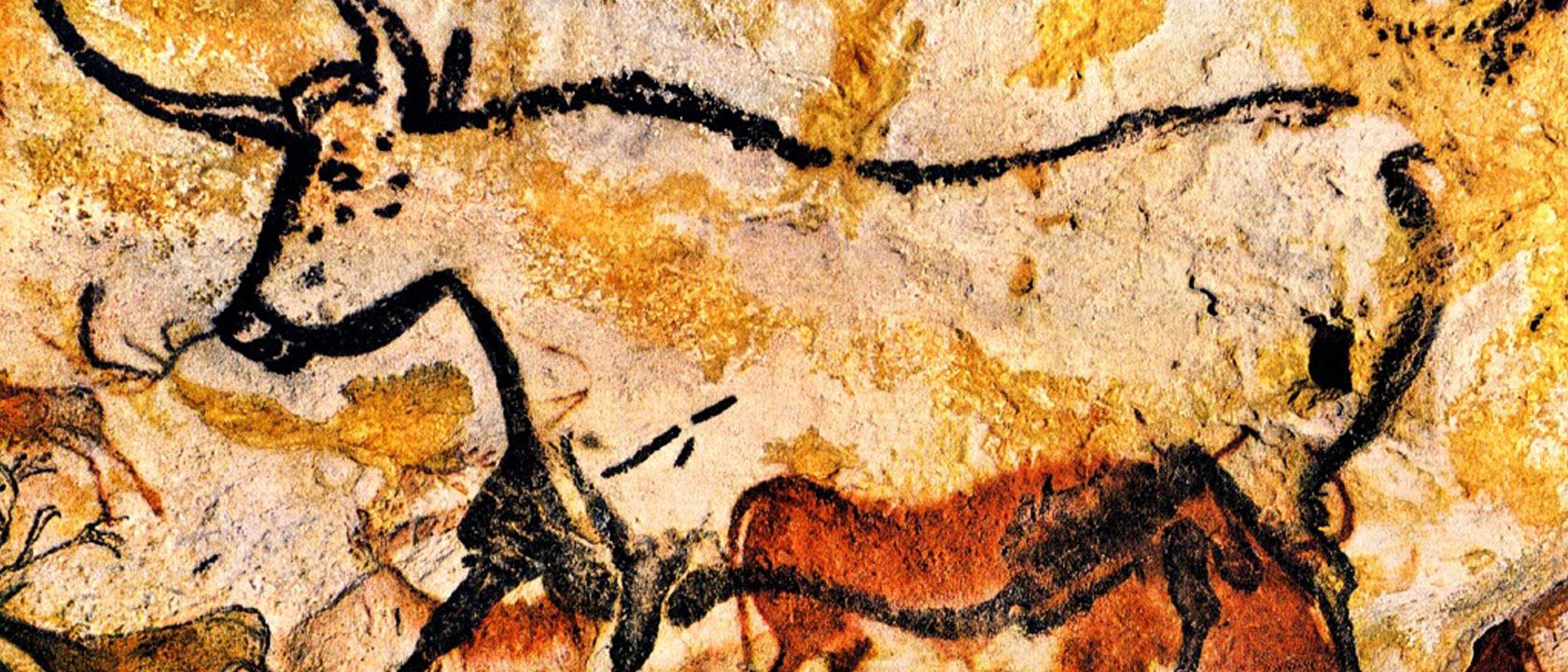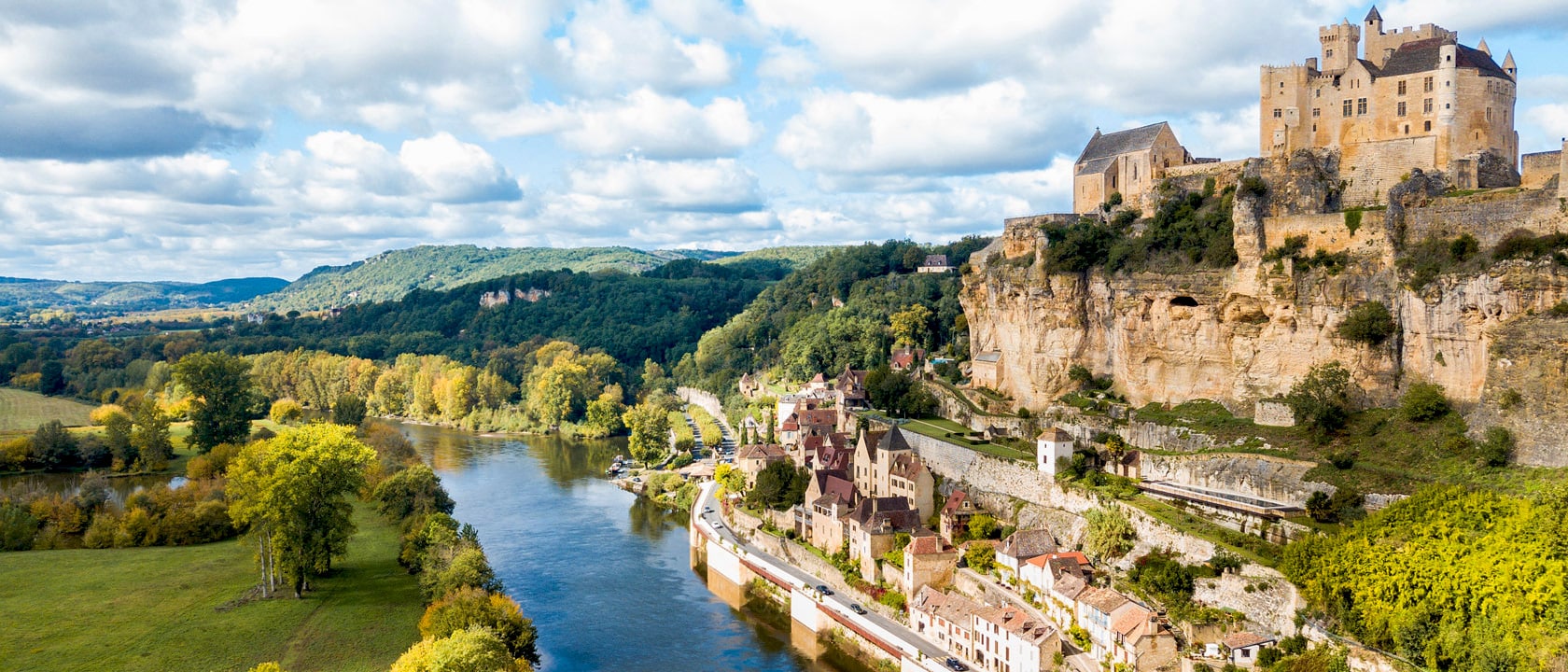Cultural Landscapes of the Midi Pyrénées & the Dordogne: A Historical Background

This tour travels through three regions of France, Midi-Pyrénées, Auvergne and Aquitaine. The southern reaches of the Midi-Pyrénées and Aquitaine comprise a broad plain that crosses the European peninsula in the shadow of the high Pyrénées to the south. Their northern areas, such as the Dordogne, are dominated by uplands cut through by the deep river valleys of the Lot, Tarn and Dordogne. Much of the Auvergne consists of the thickly wooded heights of the Massif Central, also cut through by deep river valleys.
The southern plain, watered by the Garonne, the Gironde and their tributaries, facilitates easy passage from the Mediterranean to the Atlantic. Its history and culture have been shaped by its links to the Mediterranean; its language – Occitan – for example, is quite different from that of the north, with elements imported from Islamic Iberia by the medieval troubadours. Invaded and colonised by peoples as diverse as the Celts, Iberians, Romans, Visigoths and Arabs, it evolved polities such as the County of Toulouse that throve on Mediterranean trade and jealously guarded their freedom from ambitious northern dynasties like the Capetians. It was on the slopes of the Pyrénées and on the rich southern plain that the Cathars built their communities. Catharism was a dualist religion that derived ultimately from Persian Zoroastrianism in the thought of the 3rd century Gnostic, Manes. The Bulgarian Bogomils transmitted his ‘Manichean’ belief that the world was a battleground of palpable good and evil to Europe. Their heirs, the Cathars, saw the material world as irredeemably corrupt, and formed communities – of ‘perfecti’ – that eschewed the carnal world, their abstinence contrasting awkwardly with the abuses of the organised Church. Not all Cathars were ‘perfecti’. They could also be ordinary followers of the Creed who supported the ‘perfecti’ materially and were loud in their criticism of Church abuses. The Albigensian Crusade (1209–1229) to stamp out this heresy gave St Louis (Louis IX) and his general, Simon de Montfort, an excuse to incorporate these rich southern lands into the French Royaume.
Further North, in the western part of the Auvergne (Massif Central), our tour travels through what was in the past some of the most inaccessible country in France, prized by musicians, historians, literati and artists for its pristine folk culture, untouched by industrial progress; we think of Marie-Joseph Canteloube de Malaret’s lovely collection, Songs of the Auvergne (1923-30).
In the Middle Ages, when the Roman Empire collapsed and the population of Europe dropped by some two-thirds, much of the Continent reforested itself. In the Later Middle Ages, when population recovery and steep growth led to a land hunger, these isolated regions were recolonised. The northernmost regions through which our tour travels were a frontier zone between civilization and wilderness, tamed by local nobles who built daunting castles and colonial towns called bastides. The local population was forced to live within these bastides not only for protection but also so that its agricultural and trade activity could generate taxes for the towns’ founders. Bastides were often regular in plan with a large market square at their centres; they are the distant precursors of later frontier towns, such as those in the Americas and British Empire.
In the 14th and 15th centuries this wild region, that had known so many wars, was the frontier in the greatest contest between what were later understood as the French and English monarchies, the House of Valois and the House of Plantagenet (also known as House of Anjou). Both monarchies also built bastides to protect their lands against their adversaries in this long contest for the French Crown. With the triumph of the French, the region was finally integrated into what we now know as France, but the urge for independence never quite left the south, resurfacing in struggles like the wars of religion and the French Revolution. The political geography of the region had nevertheless changed, and a number of medieval castles were transformed in the 17th and 18th centuries, into richly decorated châteaux surrounded by stately formal gardens.
This history of constant contest between north and south, between Mediterranean and northern culture, different religious persuasions, and between ambitious dynasties, has left a rich imprint on the region’s heritage and culture. But its fascinating history does not begin at the end of antiquity, for the deep valleys we visit also harbour the magnificent art of Stone Age cave dwellers. The discovery of these extraordinarily naturalistic rock paintings and engravings, hidden deep in womb-like caverns, literally gave birth to the study of human Prehistory in 19th and early 20th century France. The extraordinary representations of the great herds of bison, aurochs, wild horses and other animals that roamed the region are thought by some to be linked to hunting through the metaphorical capture of the quarry’s spirit in painted and sculpted images that were ‘attacked’ by prospective hunters. The paintings, made between 40,000 and c.15,000 BC, seem to have ceased when the earth warmed at the end of the last Ice Age, and the great herds these artists had depicted and hunted moved north to grazing lands freed by the receding ice.

 Cultural Landscapes of the Midi-Pyrénées & the Dordogne 2025
Cultural Landscapes of the Midi-Pyrénées & the Dordogne 2025